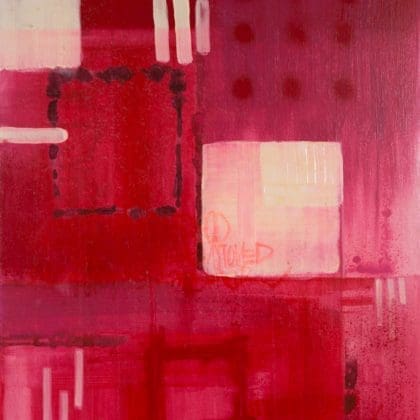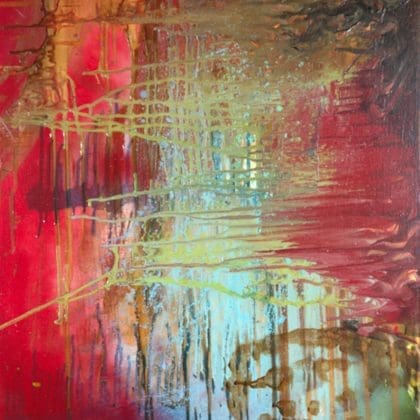A step-by-step guide to curate your taste, your space, and the art that would feel like you actually live there.
In recent years online art sales have surged with a remarkable 72% increase in 2021 alone accounting for nearly 25% of all art sales. This upward trend is expected to continue reflecting our growing comfort with purchasing virtually everything online. So why should buying art be any different?
Why Buy Art Online?
- Access to a Global Marketplace: Millions of artists from around the world now offer their work online giving art lovers access to an extensive array of styles mediums and cultural influences.
- Affordability: New technologies like inkjet and 3D printing make it possible to acquire museum-quality pieces at a fraction of the cost of originals.
- Inclusivity: Whether you’re just starting your career or on a tight budget you can still fill your space with unique art that resonates with you.
However with endless options the process can feel overwhelming.
Should you buy an original or a print? What size is best? How much should you spend?
This guide will walk you through the essential steps to make your art-buying journey enjoyable and straightforward.
Step 1: Define Your Interests (begin with what you like)
- Start by Exploring: If you’re new to the art world spend time browsing different art websites to see what catches your eye. Look at various styles mediums and subjects to identify patterns in your preferences.
- Take Notes: Write down the terms that frequently appear in the pieces you like—such as “abstract,” “landscape,” or “oil painting.”
- Narrow Your Search: Once you have a clearer sense of your tastes use these keywords to refine your search. Many websites offer robust filters to help you zero in on exactly what you’re looking for.
Side Note: At saïd + art, you can filter by category size orientation and price and then further refine your search using specific keywords.
Step 2: Map Your Space (visualize your art in its future home
- Consider the Room: Different spaces in your home may call for different types of art. For example intimate or personal pieces might be better suited for a bedroom while bold conversation-starting works might belong in the living room.
- Measure the Space: Use painter’s tape or sticky notes to outline potential dimensions on your wall. This will help you visualize how different sizes of artwork will look in the space.
- Coordinate with Decor: Decide whether you want your art or your furniture to be the focal point. If your furniture is bold opt for more understated artwork and vice versa.
Pro Tip: When hanging art over furniture the width of the artwork should generally be between 2/3 and 3/4 of the width of the furniture.
Step 3: Choose a Color Palette (find colors that complement your space)
- Use a Color Wheel: A color wheel can help you generate harmonious color schemes based on different types of color relationships such as monochromatic analogous complementary or triadic.
- Match Your Room’s Vibe: Select a prominent color from your room and use it to search for artwork in a similar palette. This ensures that the art enhances the space rather than clashes with it.
Step 4: Determine the Right Size
- Spacing is Key: Ensure that your artwork has enough space around it to breathe but not so much that it looks lost on the wall.
- Follow the 60%-75% Rule: As a general guideline your artwork should take up 60%-75% of the available wall space (excluding areas covered by furniture or moldings).
- Consider Gallery Walls: Instead of a single large piece you might opt for a collection of smaller works arranged in a gallery-style layout. This can be a more affordable option and offers a way to express your personality through a curated selection.
Step 5: Decide Between Originals Limited Editions or Prints (explore your options)
- Originals: Unique one-of-a-kind pieces that often come with a Certificate of Authenticity. Originals can be more expensive but buying from emerging artists can make them more affordable.
- Limited Editions: Replicated forms of original works produced in limited quantities often numbered and signed by the artist. These can be a more economical option than originals.
- Open Editions: Unlimited reproductions that are generally more affordable but lack the exclusivity of limited editions or originals.*Side Note:* Quality can vary in open editions so make sure to check the production process before purchasing.
Step 6: Choose the Right Frame (it kinda matters)
- Frame to Match the Artwork: The right frame can enhance the artwork while the wrong one can detract from it. Consider the style of the piece when choosing a frame.
- DIY Framing Options: Websites like AmericanFrame.com and FramesUSA.com offer virtual tools that allow you to see how your artwork will look framed often with options for different mats backings and UV protection.
- Apps for Visualization: Use apps like WallApp or Wallary to virtually place your art on your walls before making a purchase. These tools help you see how the piece will look in your space ensuring you’re happy with your choice.
Side Note: At saïd + art, we have an online visualization tool to help you do exactly that for your own space.
Closing Thoughts
Buying art is an ongoing process. As your tastes evolve and new artists emerge you’ll continue to discover pieces that resonate with you. Keep exploring and don’t be afraid to mix things up as you curate your personal collection.
If you found this guide helpful consider joining our creative community. You’ll gain access to more tips and thousands of works by emerging artists all available for purchase.
Plus it’s free to join!







